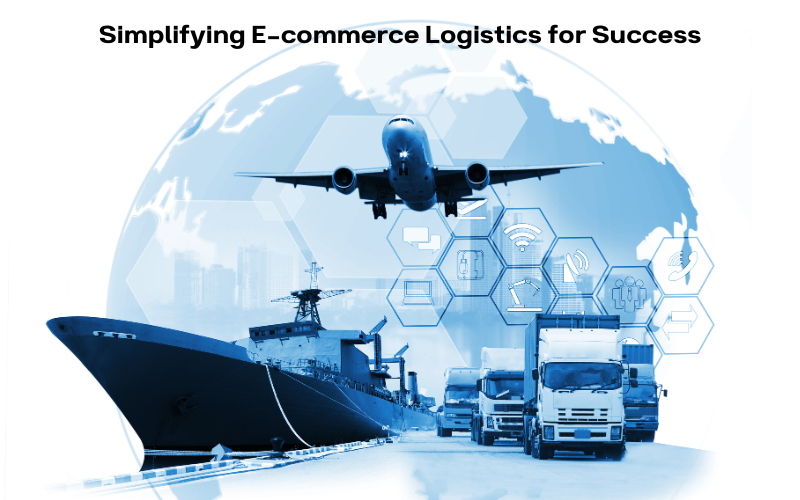In the bustling world of e-commerce, efficient logistics is the backbone that supports every successful transaction. From the moment a customer clicks “purchase” to the time their package arrives at their doorstep, the logistical process behind the scenes plays a pivotal role in customer satisfaction and operational efficiency. This detailed guide explores the complexities of e-commerce logistics and provides actionable strategies to streamline these processes, enhancing both customer satisfaction and your bottom line.
E-commerce Logistics
The landscape of e-commerce logistics encompasses all activities involved in managing the flow of goods from suppliers to consumers. Effective logistics management not only ensures timely delivery but also minimizes costs and maximizes efficiency through sophisticated synchronization of various processes.
Understanding the Core Components of E-commerce Logistics
Inventory Management
- Overview: Proper inventory management ensures that you have the right amount of products at the right time, preventing both overstock and stockouts.
- Techniques: Utilize automated inventory systems and demand forecasting tools to maintain optimal stock levels.
Warehousing Solutions
- Efficient Storage: Design your warehouse layout to facilitate easy access and quick dispatch of popular items.
- Advanced Systems: Implement management systems like WMS (Warehouse Management Systems) to streamline operations and reduce errors.
Order Fulfillment
- Process Optimization: Streamline your picking, packing, and shipping processes to speed up order fulfillment.
- Technology Integration: Leverage technologies such as robotics and AI to enhance the speed and accuracy of order processing.
Leveraging Technology to Enhance Logistics Efficiency
The Role of Automation in Logistics
- Automation Tools: From automated sorting systems to drones for delivery, explore the various tools that can automate logistics operations.
- Benefits: Discuss how automation not only speeds up the process but also reduces labor costs and human error.
Utilizing Data Analytics
- Predictive Analytics: Use data analytics to predict trends, understand customer behavior, and optimize logistics operations.
- Real-Time Tracking: Implement systems that offer real-time tracking of shipments, providing transparency to both businesses and customers.
Optimizing Shipping and Delivery
Shipping Strategies
- Carrier Selection: Choose the right shipping partners based on factors like cost, reach, and reliability.
- Shipping Options: Offer a variety of shipping options to meet different customer needs and budgets.
Last-Mile Delivery Innovations
- Overview: Last-mile delivery is often the most complex and expensive part of the shipping process.
- Innovative Solutions: Explore innovative solutions like local locker pick-ups, crowdsourced delivery, and same-day delivery services.
Managing Returns Effectively
Streamlining the Returns Process
- Hassle-Free Returns: Simplify the returns process to enhance customer satisfaction and encourage repeat business.
- Reverse Logistics: Implement efficient reverse logistics to handle returns smoothly and cost-effectively.
Challenges and Solutions in E-commerce Logistics
Common Challenges
- Global Logistics: Managing logistics on a global scale includes challenges such as dealing with international shipping regulations and varied customer expectations.
- Scalability: As your business grows, your logistics must scale accordingly, which can be a significant challenge.
Strategic Solutions
- Scalable Systems: Develop scalable logistic solutions that grow with your business.
- Global Partnerships: Establish partnerships with global carriers and logistic providers to enhance your worldwide reach.
Building a Robust E-commerce Logistics Framework
Effective e-commerce logistics management is crucial for ensuring that your operations can support your business goals and meet customer expectations. By implementing the strategies discussed, businesses can create a robust logistics framework that not only withstands the challenges of today’s market dynamics but also drives future growth.
Actionable Tips:
- Regularly review and adjust your logistics strategies based on performance data and evolving business needs.
- Engage in continuous training for your team to keep them updated on the latest logistics technologies and practices.
- Foster strong relationships with all logistics partners and service providers to ensure smooth operations.

